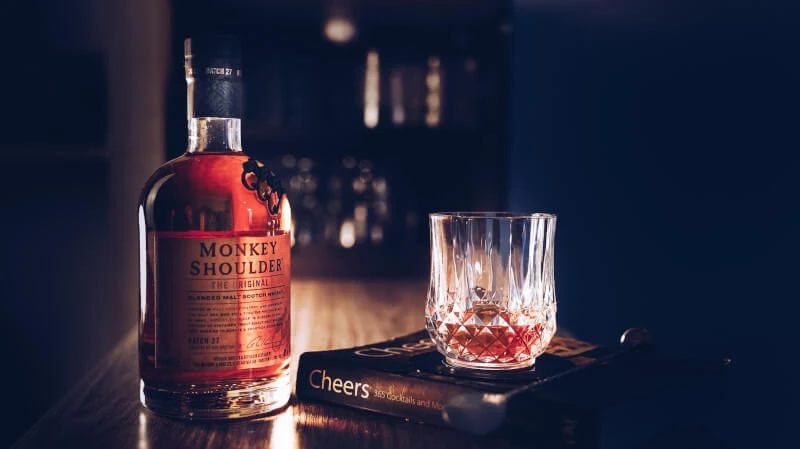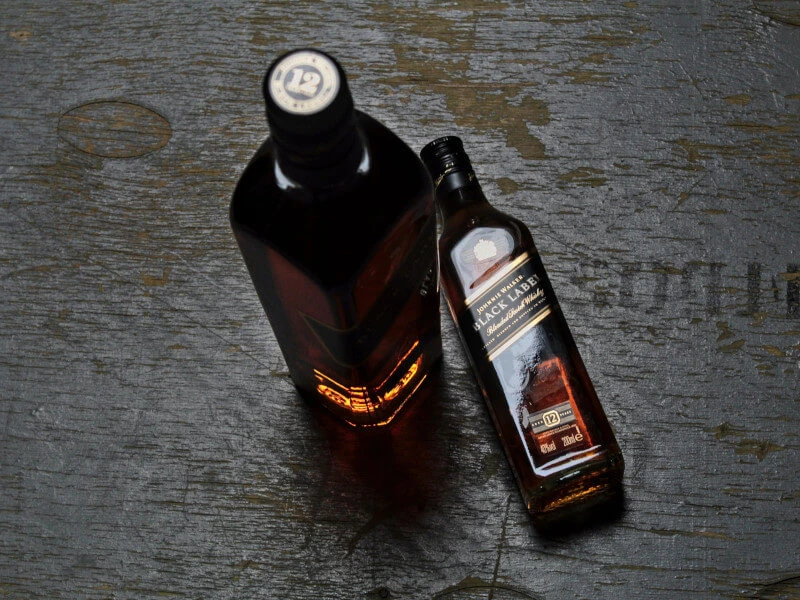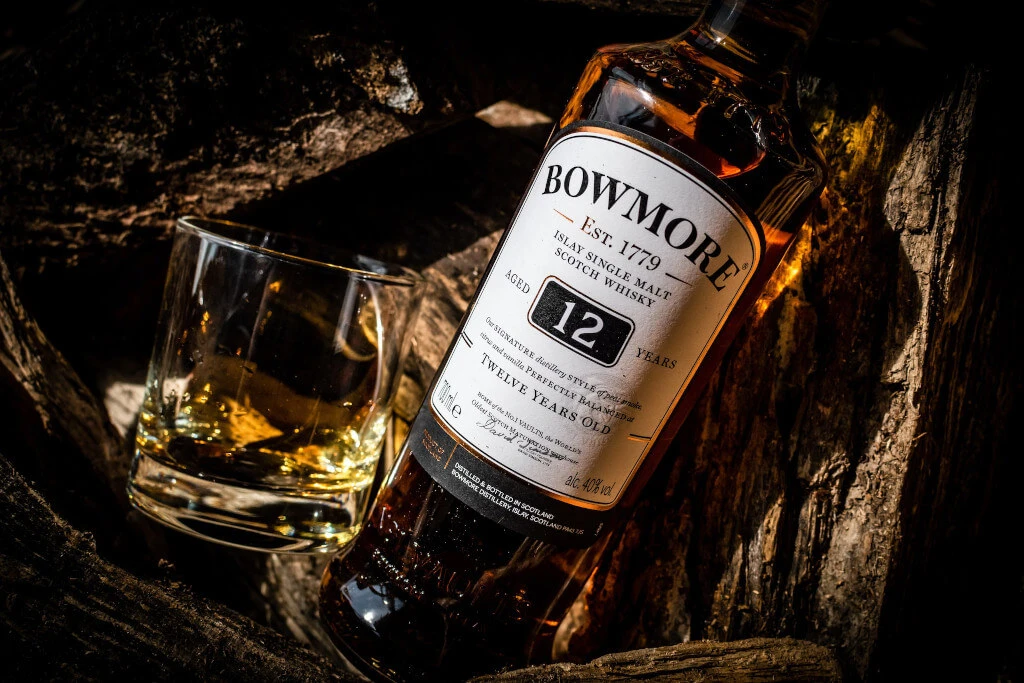“The magic of whisky photography lies not just in capturing the drink but in narrating its history, aroma, and essence,” says professional photographer Lana Sinclair. She believes that art goes beyond just taking a good photograph; it’s about evoking the sensory experience of whisky.
Learning to Control Light

Light is your best friend when trying to capture the elegance of whisky. With the correct ambiance, every whisky drop may tell its tale. The glass should be illuminated with natural or mild light so that it is visible but not overpowered. In this video, Chris Lomas, a world-famous whisky photographer, guides you to the “sweet point” where the spirit shines brightest. Avoid using flash or LED lights since they create flat images. By manipulating the light, you can make the whisky’s subtle flavors stand out.
The label on the back of the bottle can block light, as pointed out by Martin Botvidsson, another well-known figure in the beverage photography field. What’s your medicine for? The rear label must be removed before the photo session.
Glass reflections can be difficult to deal with. However, here’s a trick: dim illumination reduces issues with reflections. Rob Lawson, who has collaborated with well-known whisky labels, suggests trying new things. If the light is too dim, the bottle may appear frosted, but if it’s too bright, the reflection may be overplayed.
Tight on cash? Taping a piece of baking paper or parchment over your flash is a clever trick that Botvidsson suggests. This do-it-yourself diffuser will disperse the light and make your photo look better. For a softer final product, fold the paper several times.
Show The Pour
Whisky in motion can be hypnotic. Ben Thornton, a whisky blogger, notes, “Capturing the liquid mid-pour creates a dynamic element, drawing viewers into the anticipation of that first sip.” Why not experiment with a shot mid-pour next time?
The Colour and Music Symphony
Whisky comes in a wide variety of colors, from pale straw to dark burgundy. Your shot should highlight this color scheme. Jo Hanley stresses the value of capturing each whisky’s color. Try your best to achieve a natural color.
Chris Lomas has a sage recommendation on backdrops: try to stay away from the boring white one. The whisky will stand out more against a black backdrop. “The setting in which you capture your whisky can add layers of depth to your story,” notes Sinclair. Have you tried placing your bottle against a rustic wooden background or perhaps against a backdrop of old books? It subtly hints at the age and richness of the whisky.
Props and Garnishes
How about integrating natural elements? Sinclair shares an experience: “Once, I placed a bottle of peated whisky next to some damp moss and foggy glass. The aim? To replicate the misty moors of Scotland and bring out the smoky tones of the whisky.” What elements might you introduce to tell your whisky’s story?
Improving your images by focusing on composition is a great option. Low aperture settings create a shallow depth of focus, which blurs the background and draws attention to the whisky. This serves to highlight the bottle and add some aesthetic value.
The ‘rule of thirds’ is another important notion to keep in mind. Think of the target as a tic-tac-toe board. To lead the viewer’s eye easily through the shot, place your whisky at the intersections or along these lines.
Play with Angles
While the ‘rule of thirds’ is pivotal, dare to go off the beaten path. Top-down shots, diagonal tilts, or extreme close-ups can offer fresh perspectives. Sinclair challenges you, asking, “Have you ever tried capturing the reflection in a droplet as it slides down the inside of the glass?”
The Key to Perfection Is Time and Money

While the quality of smartphone cameras has improved greatly, specialised equipment is still necessary to take stunning photos of whisky. However, keep in mind that it’s not about having the most cutting-edge camera but rather the appropriate equipment. Get a decent lens first. Jo Hanley recommends spending what you can afford on lenses of the highest quality. The combination of a 50mm lens and a speed light (an external flash unit) can greatly improve your photography.
Rob Lawson recommends purchasing a tripod and a cheap camera that can shoot 35 mm film or a digital equivalent. You may learn more about lighting effects and develop your aesthetic with this setup.
You may want to add to or improve your setup as your development continues. Photographer Konrad Borkowski, for instance, employs a plethora of lenses and lights to capture his subjects in a wide range of settings.
Whisky and Companions
Think about what complements a good whisky. A leather armchair? A crackling fireplace? An old record player? Integrating such elements adds a touch of nostalgia and paints a fuller picture. As Thornton puts it, “It’s about the experience, the memories, and the feelings that whisky invokes.”
Don’t go crazy taking hundreds of pictures, though. The focus should be on excellence, not quantity. You may capture the essence of whisky by getting the lighting and settings just right and not leaning too heavily on post-production. And as Botvidsson puts it, go with your instincts, don’t rush things, and believe in yourself. When you do, you won’t just be taking a picture of the whisky; you’ll be capturing its whole essence.
Post-Processing in Moderation
While it’s tempting to enhance your photos in editing software, remember subtlety is key. Renowned photographer Mark Petersen advises, “Use post-processing to accentuate, not dominate. Let the whisky be the star.” How might a slight adjustment, rather than a complete transformation, refine your shot?
Capturing the essence of whisky in a photograph requires a symphony of technique, environment, and narrative. The dance of light, the strategic use of props, and the allure of a perfect pour all converge to narrate a story as rich and varied as the drink itself. But while technical prowess is essential, the heart of extraordinary whisky photography lies in translating the intangible — the aroma, the taste, the memories evoked with every sip — into a visual masterpiece. For professionals and enthusiasts alike, every shot isn’t just about showcasing a bottle but about sharing an experience.
A remarkable whisky photograph speaks, not through words, but through the emotions it stirs in its viewer. So, remember: it’s not just about the whisky; it’s about the stories it tells. The next time you set up your camera and arrange your scene, ask yourself: what tale do I want to share today? Because in the end, that story — your story — is what makes the image truly extraordinary.

